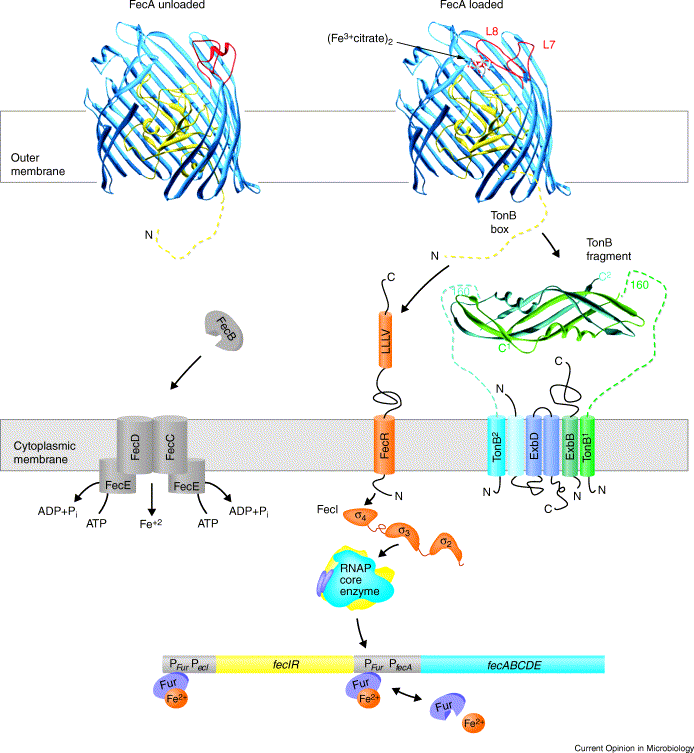Team:Paris/Transduction overview strategy
From 2009.igem.org
(→C.1 The Fec operon) |
(→C.1 The Fec operon) |
||
| Line 35: | Line 35: | ||
The plan would be to use FecA- mutant receiver and FecA+ mutant donor to transfert the constitutive FecA protein to the receiver. In this case the receiver will express the FecABCD operon without being induce by ferric citrate in the medium , and so we could place under the control of the Fec ABCD promoter, which is called pfec, the gene sequence encoding for the response. For the moment a response that would be easy to detect is the fluorescence of the RFP and the biobrick BBa-J61002 is the perfect candidate to test the system. | The plan would be to use FecA- mutant receiver and FecA+ mutant donor to transfert the constitutive FecA protein to the receiver. In this case the receiver will express the FecABCD operon without being induce by ferric citrate in the medium , and so we could place under the control of the Fec ABCD promoter, which is called pfec, the gene sequence encoding for the response. For the moment a response that would be easy to detect is the fluorescence of the RFP and the biobrick BBa-J61002 is the perfect candidate to test the system. | ||
| + | |||
We also discovered that some fecR and fecI mutants can be use to amplify the signal because thay have a constitutive activity. So we put under the control of pfec FecR and FecI muated. When they will be expressed, they will be activator of pfec and consequently of RFP. Normaly we would be able to obtain a increasing fluorescence. | We also discovered that some fecR and fecI mutants can be use to amplify the signal because thay have a constitutive activity. So we put under the control of pfec FecR and FecI muated. When they will be expressed, they will be activator of pfec and consequently of RFP. Normaly we would be able to obtain a increasing fluorescence. | ||
| + | |||
[[Image:Transduction_overview_fec.png|500px|center| fec operon induction]] | [[Image:Transduction_overview_fec.png|500px|center| fec operon induction]] | ||
Revision as of 10:16, 2 October 2009
iGEM > Paris > Reception > Our strategy
C. Our Strategy
C.1 The Fec operon
Few ABC transporter such as FecABCD (iron transporter) are able to induce a response regardless of the tranlocation, due to the activity of FecA, moreover some mutant can also have a constitutive expression of FecABCD .
The plan would be to use FecA- mutant receiver and FecA+ mutant donor to transfert the constitutive FecA protein to the receiver. In this case the receiver will express the FecABCD operon without being induce by ferric citrate in the medium , and so we could place under the control of the Fec ABCD promoter, which is called pfec, the gene sequence encoding for the response. For the moment a response that would be easy to detect is the fluorescence of the RFP and the biobrick BBa-J61002 is the perfect candidate to test the system.
We also discovered that some fecR and fecI mutants can be use to amplify the signal because thay have a constitutive activity. So we put under the control of pfec FecR and FecI muated. When they will be expressed, they will be activator of pfec and consequently of RFP. Normaly we would be able to obtain a increasing fluorescence.
problems : the message is unidirectionnal and unrepeatable. It would just be a proof of principle that a vesicle-mediated controlled communication is possible.
C.2 The trick TCS
We could ,with the help of Alfonso Jaramillo, design a synthetic PBP which could detect the substrate we choosed and activate a specific HK. The previous work done by Valencia in 2006 was to design vanilin-sensitive PBP and a network for a graduated response whereas we just need a proteic sensitive PBP and a binary type of response.
Even if the idea of creating a synthethic protein was very attractive, it would have been difficult to have concrete result in just 3 months.
 "
"
